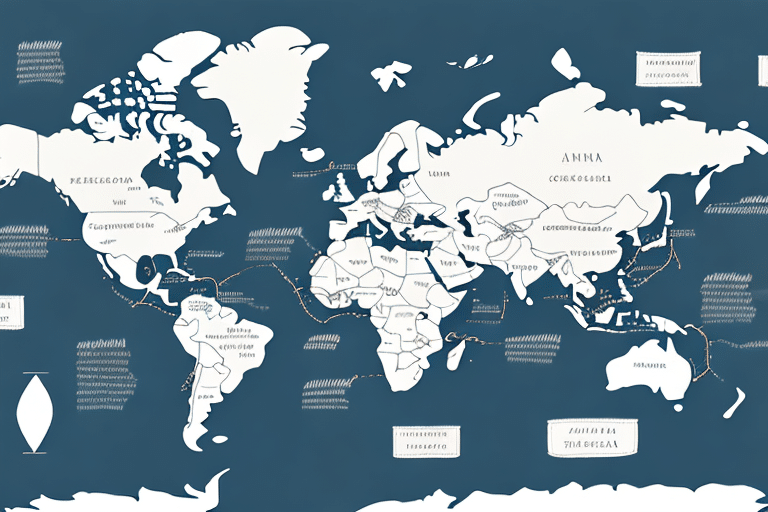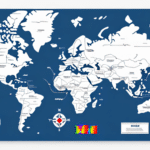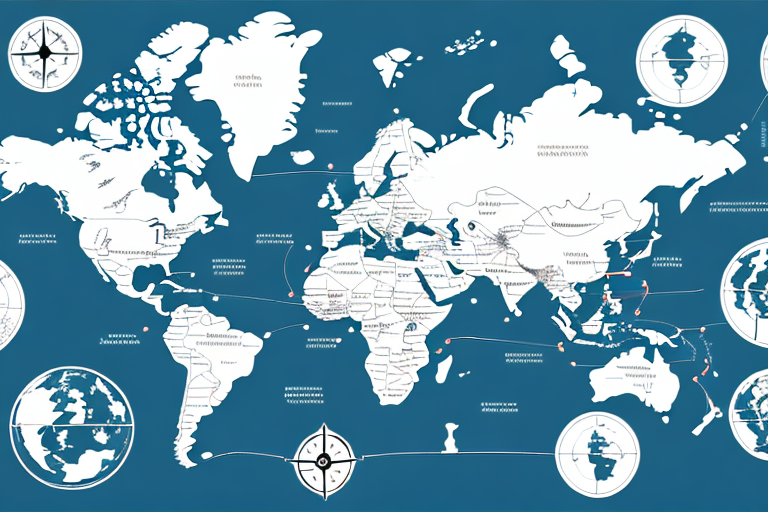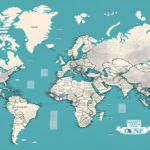Understanding UPS Zone Maps for Ground Shipping
If you are a business owner involved in shipping goods, understanding UPS zone maps is essential. This guide provides a comprehensive overview of UPS zone maps, explaining what they are, how they work, and how they can optimize your shipping strategy.
Introduction to UPS Zone Maps
UPS zone mapping is a critical process that allows shippers to determine accurate pricing and transit times for shipments within the United States. The United States is divided into multiple zones based on the distance from the shipment’s origin. The farther the destination, the higher the zone number, which correlates to increased shipping costs. According to UPS, the zone system helps streamline the shipping process by categorizing locations to optimize delivery efficiency.
UPS regularly updates its zone maps to reflect changes in transportation routes and infrastructure improvements. Staying current with the latest zone maps ensures that businesses are accurately calculating shipping costs and transit times, which is vital for maintaining competitive pricing and reliable delivery schedules.
Businesses with multiple locations can leverage UPS zone maps to identify the most cost-effective shipping routes, thereby reducing overall shipping expenses and improving delivery times. By strategically analyzing zone distribution, companies can enhance their logistics and supply chain management.
How UPS Zone Maps Work
UPS zone maps utilize zip codes to determine the distance between the shipment’s origin and destination. Each zip code is assigned a specific zone number, ranging from Zone 2 (closest) to Zone 8 (farthest). Alaska and Hawaii are classified as “extended service areas” with their own distinct zone maps.
The pricing structure is straightforward: lower zone numbers indicate shorter distances and lower shipping costs, while higher zone numbers signify longer distances and higher costs. For example, shipping a package from Zone 2 to Zone 4 will cost more than shipping within Zone 2 to Zone 3.
UPS continually updates its zone maps to adapt to changes in delivery routes and infrastructure enhancements. This dynamic nature ensures that shipping costs and transit times remain accurate. Additionally, UPS offers various shipping options, such as ground, air, and international services, each with different pricing and delivery timelines. Selecting the appropriate shipping option based on zone mapping can significantly impact your shipping budget and customer satisfaction.
The Importance of UPS Zone Maps in Shipping
For businesses that ship goods regularly, UPS zone maps are indispensable. They play a pivotal role in determining shipping costs and transit times, which are critical factors in pricing strategies and customer satisfaction. For instance, a business located in Zone 2 shipping to Zone 4 will incur higher costs compared to shipping within Zone 3 due to the increased distance.
Moreover, UPS zone maps assist businesses in developing effective shipping strategies. By analyzing customer distribution across different zones, companies can optimize their shipping routes, reduce costs, and enhance delivery efficiency. This strategic planning can lead to quicker delivery times and improved customer experiences, ultimately fostering customer loyalty and business growth.
Factors That Affect UPS Zone Mapping
Several factors influence UPS zone mapping, including:
- Mode of Transportation: Ground, air, and international shipping options each have different zone classifications.
- Type of Freight: The nature of the shipment, whether it’s standard, express, or fragile, can impact zone determination.
- Destination: The final delivery location, including remote or extended service areas, affects the zone number.
- Package Weight and Size: Heavier or larger packages may incur additional fees and impact the overall shipping cost.
- Delivery Time: Expedited shipping options can alter the zone classification and cost.
Businesses must monitor these factors regularly, as zones can change based on updates to the zone maps. Staying informed about these changes ensures accurate shipping cost calculations and efficient logistics management.
How to Read a UPS Zone Map
Reading a UPS zone map involves the following steps:
- Identify the Origin and Destination Zip Codes: Locate the zip codes for the shipment’s starting point and endpoint.
- Determine the Zone Numbers: Find the corresponding zone numbers for both zip codes on the UPS zone map.
- Calculate Shipping Cost and Transit Time: Use the zone numbers and package weight to determine the appropriate shipping rate and estimated delivery time.
It's crucial to verify the current zone map before shipping, as UPS frequently updates its maps to reflect route changes and infrastructure improvements. Additionally, remote areas may have extended delivery times or require additional fees, so always consult UPS or your shipping provider for specific shipment details.
Tips for Using UPS Zone Maps to Your Advantage
Leveraging UPS zone maps effectively can result in significant cost savings and operational efficiencies. Here are some tips to maximize their benefits:
- Optimize Shipping Routes: Use zone maps to identify the most economical shipping routes by targeting nearby zones.
- Stay Updated: Regularly check for updates to the zone maps to ensure accurate shipping cost calculations.
- Analyze Package Dimensions: Understanding the size and weight of your packages can help you choose the most cost-effective shipping option.
- Plan Ahead: Schedule shipments in advance to avoid rush shipping fees and ensure timely deliveries.
- Target New Markets: Use zone data to identify high-demand areas and expand your customer base strategically.
Implementing these strategies can help businesses reduce shipping costs, improve delivery times, and enhance overall customer satisfaction.
Choosing the Right UPS Service Level Based on Zone Mapping
Selecting the appropriate UPS service level is crucial for balancing cost and delivery speed. Zone mapping plays a significant role in this decision-making process:
- Ground Shipping: Ideal for non-urgent shipments within closer zones, offering cost-effective rates.
- Expedited Shipping: Best for time-sensitive deliveries, especially when shipping to higher zones.
- International Shipping: Requires careful consideration of zone mapping to determine the most efficient routes.
For example, UPS Next Day Air guarantees delivery by 10:30 am to most destinations, making it suitable for urgent shipments. On the other hand, UPS 2nd Day Air offers a balance between speed and cost, ensuring delivery by the end of the second business day.
By aligning your shipping needs with the appropriate service level based on zone mapping, you can achieve optimal cost efficiency and meet delivery expectations effectively.
Benefits of Using UPS Zone Maps for Ground Shipping
Utilizing UPS zone maps offers numerous advantages for ground shipping:
- Cost Reduction: Simplifies shipping cost calculations, allowing for better budget management.
- Efficient Logistics: Enhances route planning and reduces transit times, improving overall logistics efficiency.
- Strategic Planning: Enables businesses to identify and target high-demand areas, facilitating market expansion.
- Improved Customer Satisfaction: Faster and more reliable deliveries lead to higher customer satisfaction and repeat business.
Additionally, UPS zone maps help businesses streamline their supply chain operations, making it easier to manage inventory and respond to market demands swiftly.
Common Mistakes to Avoid When Using UPS Zone Maps
To maximize the benefits of UPS zone maps, avoid these common mistakes:
- Ignoring Zone Updates: Failing to check for the latest zone map updates can lead to inaccurate shipping cost calculations.
- Overlooking Package Specifications: Not accounting for package weight and size can result in unexpected fees and delays.
- Selecting Inappropriate Service Levels: Choosing a service level that doesn’t align with your shipping needs can increase costs or delay deliveries.
- Neglecting Extended Service Areas: Underestimating the complexities of shipping to Alaska, Hawaii, or other extended service areas may lead to logistical challenges.
By being aware of these pitfalls, businesses can ensure more accurate and cost-effective shipping operations, leading to enhanced efficiency and customer satisfaction.
In conclusion, UPS zone maps are a vital tool for businesses engaged in shipping goods. By understanding and effectively utilizing these maps, companies can optimize their shipping strategies, reduce costs, and improve delivery performance. However, it’s essential to stay informed about zone updates and carefully consider all relevant factors to ensure successful shipping operations.
While UPS zone maps provide a reliable framework for shipping, it’s important to have contingency plans for unexpected delays caused by factors such as weather, traffic, or logistical disruptions. Proactive planning and flexible strategies can help mitigate these challenges, ensuring that your shipping operations remain resilient and efficient.




















